Last week (16th to 18th June) – during some of the hottest days of the year so far! – the Torrijos ceiling project was one of twelve pop-up exhibits in the British Academy Summer Showcase, a three-day festival of ideas ‘for curious minds’.
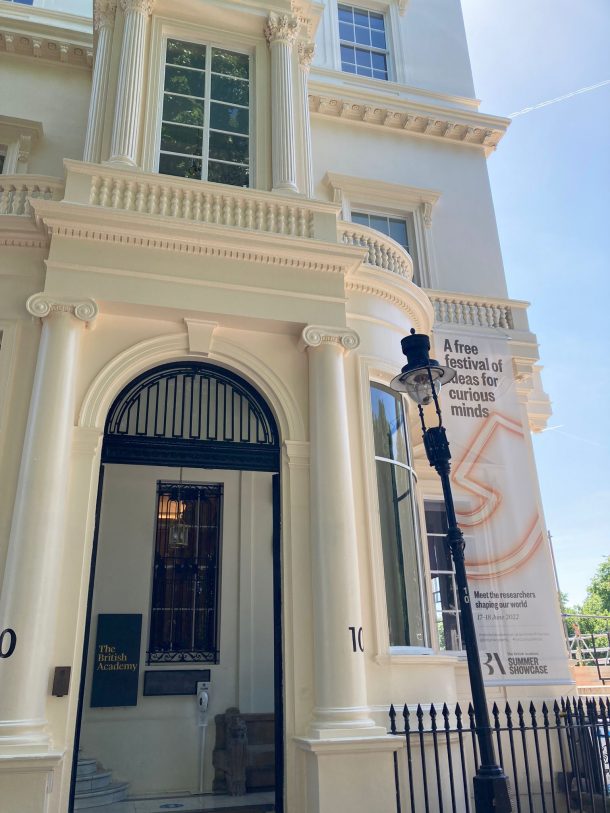
As a current recipient of a British Academy grant, our project was eligible to apply to be part of this festival, which focuses on public engagement. We jumped at the chance to reach a full spectrum of members of the public, including school groups, and to find out what people are interested to know about the Torrijos ceiling. Since the ceiling will go on public display at V&A East Storehouse in 2024, this experience will help us understand how to present it in our gallery interpretation. We also wanted to test some strategies for how to present and explain its more complex aspects. The British Academy encouraged us to be as interactive as possible in our presentation, and we decided to focus the exhibit around materials and making – the fact that the ceiling is made of wood, and that it uses standardised carpentry techniques to produce something that looks very complicated.
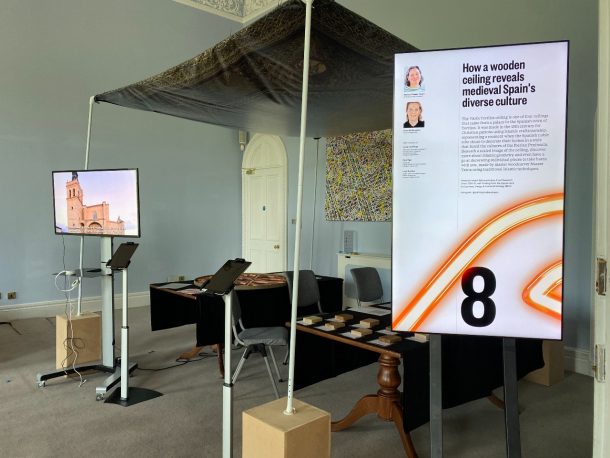
The exhibit was entitled ‘How a wooden ceiling reveals medieval Spain’s diverse culture’, because an essential part of the message about the Torrijos ceiling is also the fusion of cultures, crafts and aesthetics across the Iberian Peninsula.
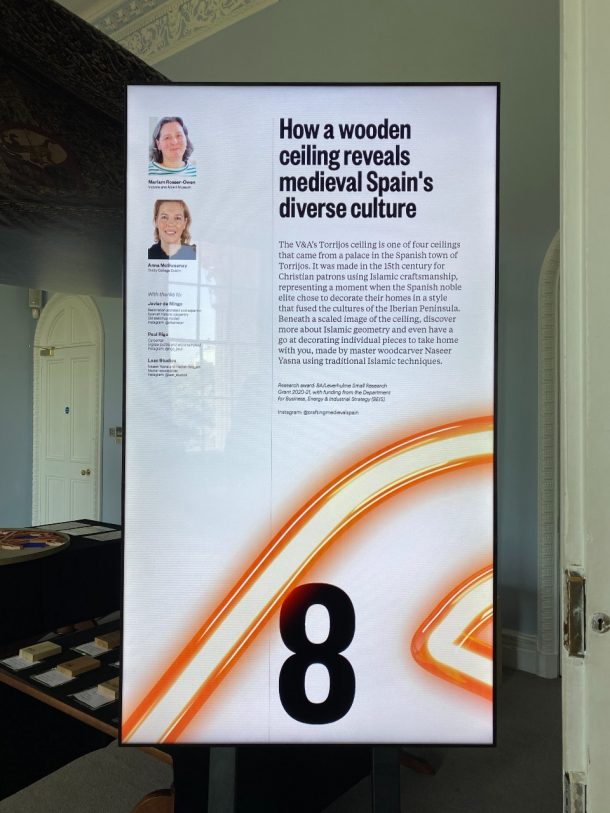
The core of the exhibit was a reduced-scale canvas reproduction of the V&A’s Torrijos ceiling as a canopy over our heads – this measured 3 x 3 m, so was therefore a quarter of the full size of the original ceiling. This gave people an indication of its size, but also allowed us to point to different design elements of the ceiling when we were talking about it to visitors.
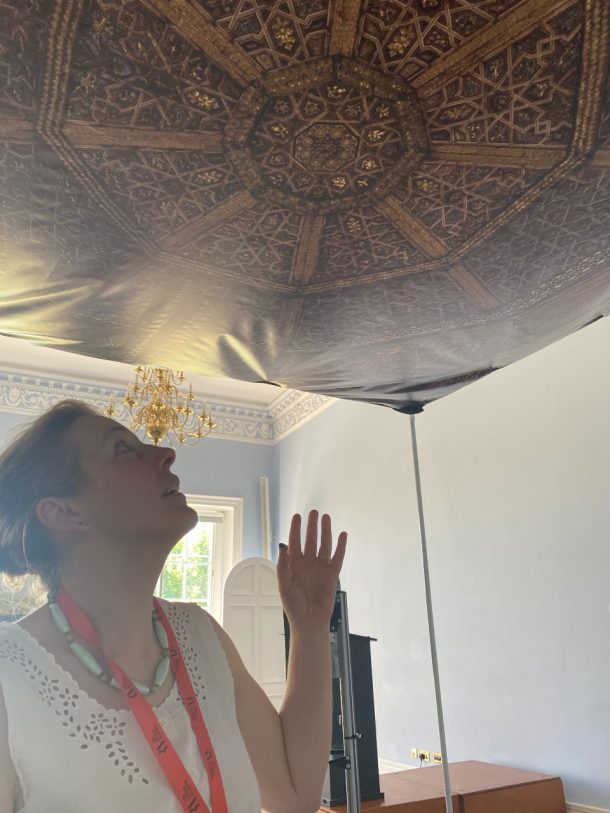
Underneath the ceiling, we had two tables. One focused on wood, and included a display of wood types – poplar, oak, red cedar, Lebanese cedar, cherry, maple, walnut and teak. Visitors were encouraged to pick these up and handle and smell them, to feel their different densities and the properties that make these woods so good for making furniture and architecture. Lebanese cedar, for example, has a strong smell, and is a natural insect repellant, which is one reason that ceilings made of this material last across the centuries. In the Alhambra, in Granada, the cedar would have been imported from Morocco to make the ceilings.
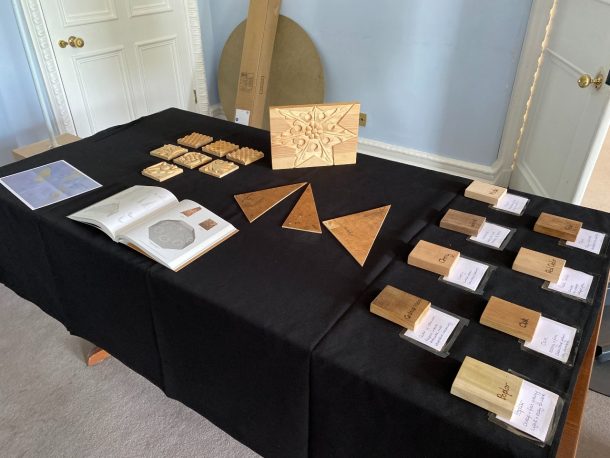
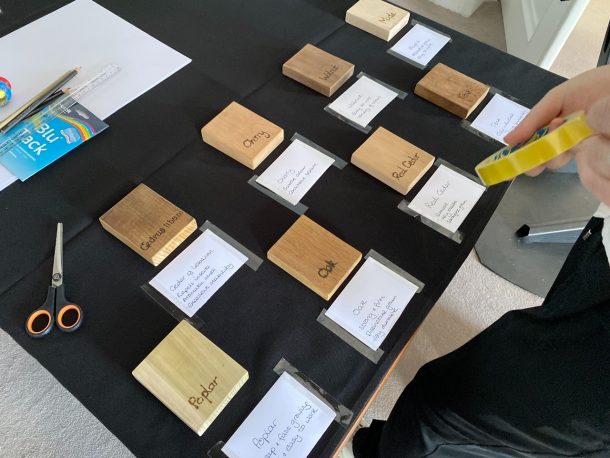
The wood mainly used for making ceilings in Spain is pine, and this is the wood that was used by our friends at Lazo Studios to make a number of display samples.
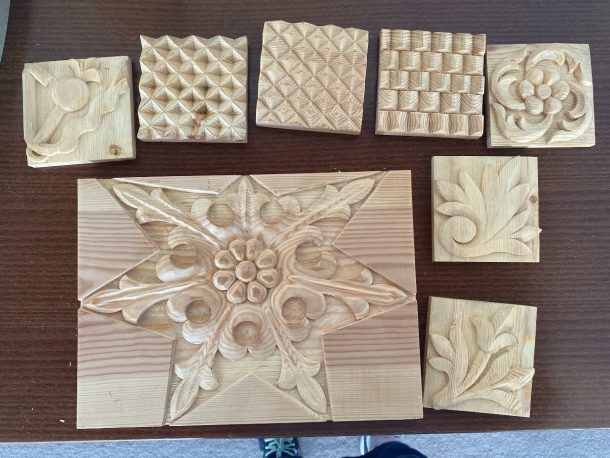
Originally we had invited Naseer Yasna to give live wood-carving demonstrations throughout the Showcase, carving design elements from the Torrijos ceiling, but in the end he was not able to participate in person – he therefore kindly carved us these examples of motifs from the ceiling, and made a timelapse film of himself carving the largest piece, which we showed on the TV screen accompanying our exhibit.
Naseer also drew the same designs on a number of coaster-sized wooden blocks and we offered our visitors the chance to decorate these with coloured pens. We weren’t sure how popular this would be, and mainly had younger children in mind who would be coming through on the public day on Saturday, but this became one of the most popular activities on our exhibit! Young and not-so-young alike got very involved in decorating these, or using the plain backs to create their own designs, and we were extremely impressed by their skill and creativity. Our idea had been that people would take these away with them as a souvenir, but surprisingly few people actually did so.
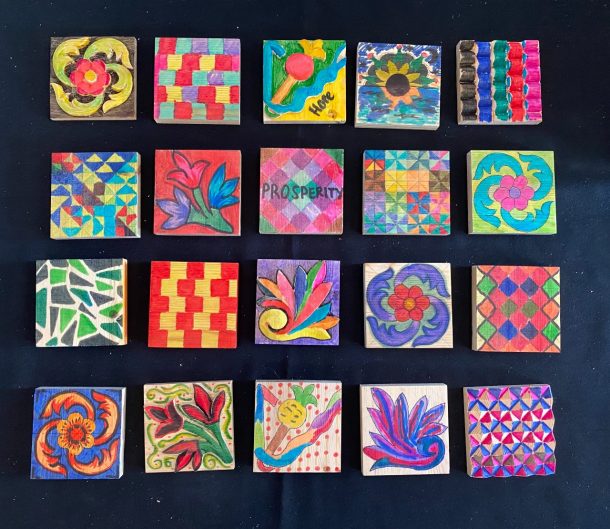
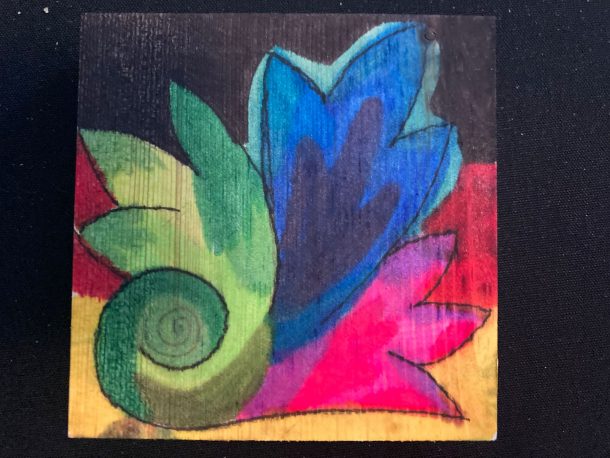
The main activity on our stand was the jigsaw puzzle, made for us by carpenter Paul Rigo, based on the main eight-pointed star design that repeats across the ceiling’s panels.
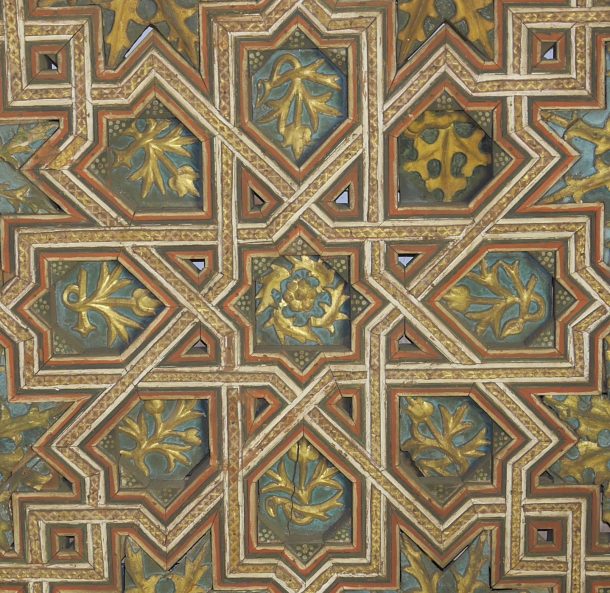
In order to make this puzzle, Paul had to learn a lot about the methods used to make strapwork carpentry ceilings, and make his own carpenter’s squares (a tool to measure angles known in Spanish as the ‘cartabón’) in order to do so. He consulted with our project collaborator Javier de Mingo, watched YouTube films of Enrique Nuere explaining the process, and referred to the really helpful diagrams in the book La Carpintería de lo Blanco en ejemplos granadinos. Lógicas constructivas, conservación y restauración (Strapwork carpentry in Granadan examples. Construction principles, conservation and restoration), edited by Antonio Fernández-Puertas, Purificación Marinetto Sánchez and Gloria Aljazairi López (University of Granada, 2015).
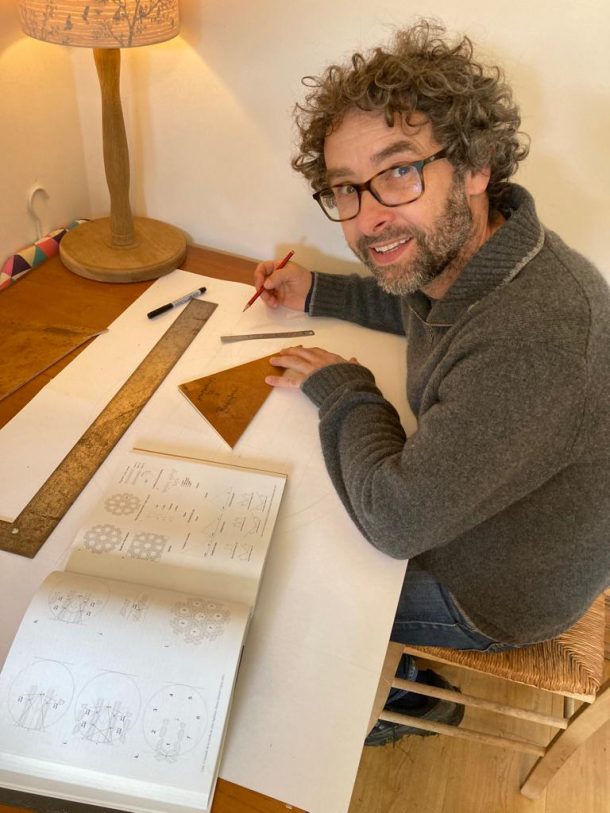
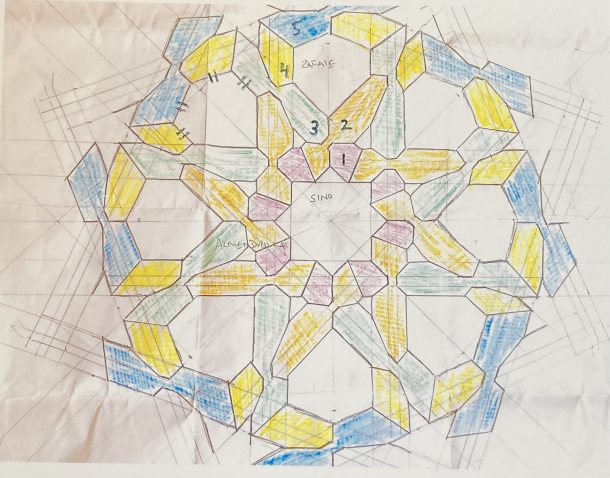
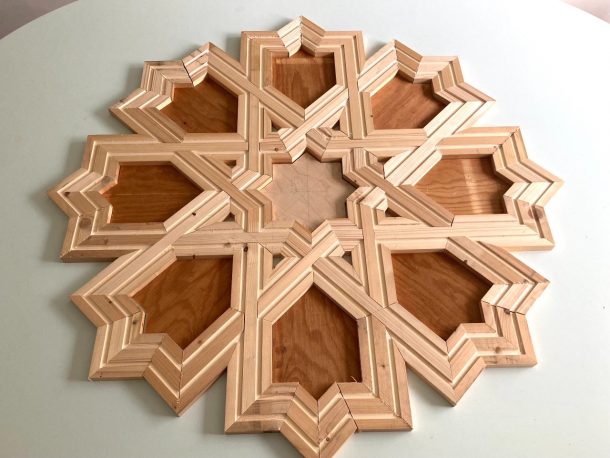
Each puzzle piece was cut to the identical shape of one of the carpentry elements used on the ceiling. On the ceiling, these were cut into the surface of the structural beams that created the ceiling, so that as the ceiling was assembled, the surface decoration also took shape. The blue ‘zafates’ – smaller panels with applied floral decoration – were applied from the back, stuck on as patches, as can be clearly seen in this photo. The puzzle was painted gold, red, black and blue, replicating as much as possible the colours used on the original ceiling.
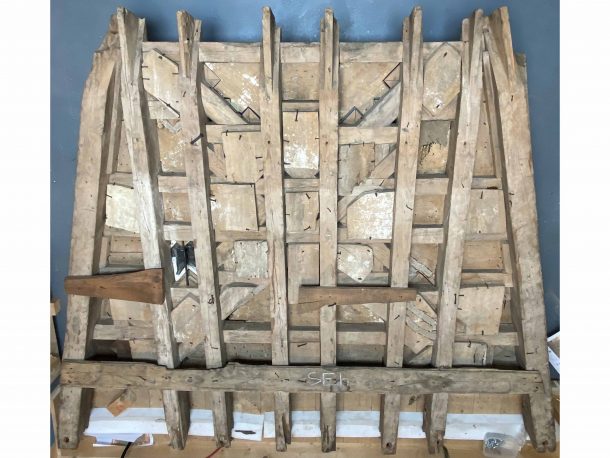
This jigsaw puzzle proved immensely popular with our visitors! From VIP visitors during the private view on Thursday evening, to the school groups on Friday, who decided they wanted to beat their classmates and asked us to time them as they completed the puzzle – the record was set by a group of girls who finished it in just over 4 minutes!
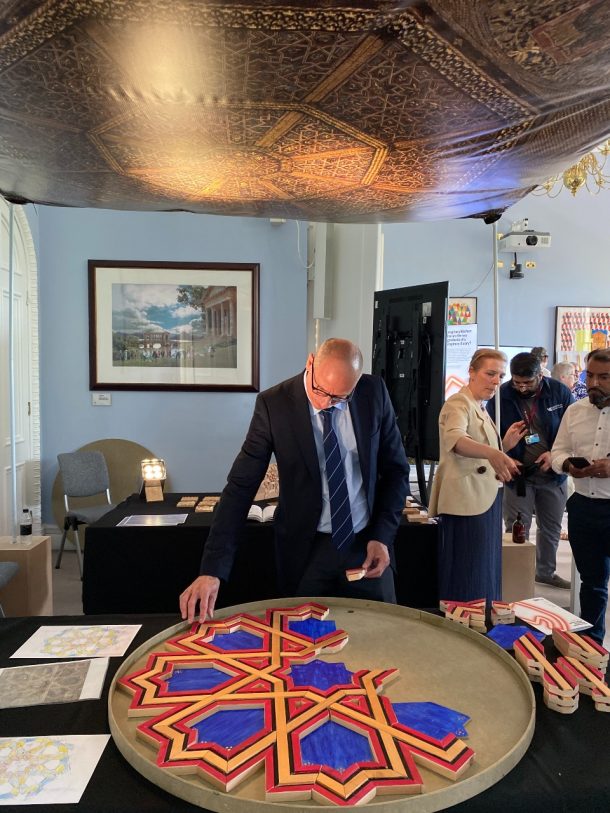
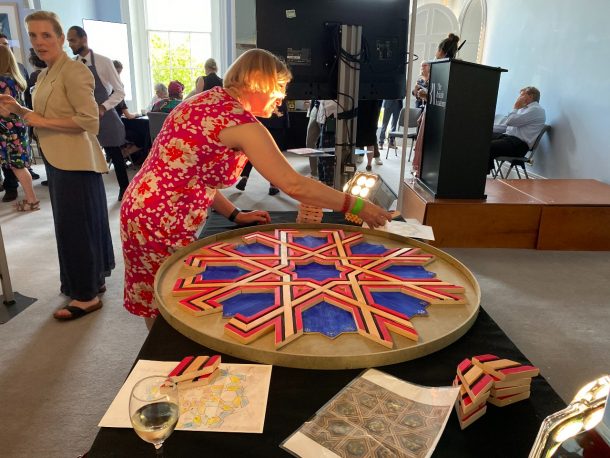
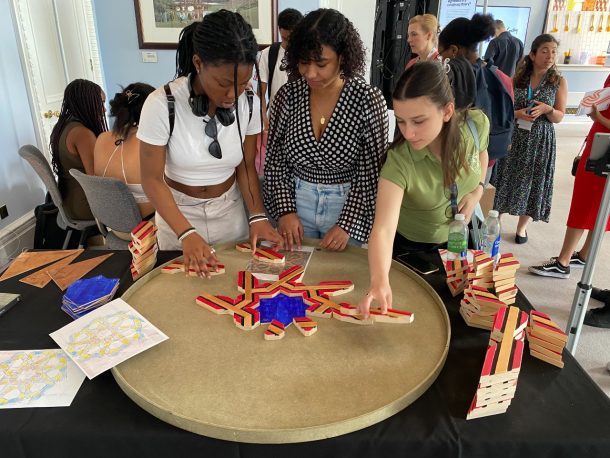
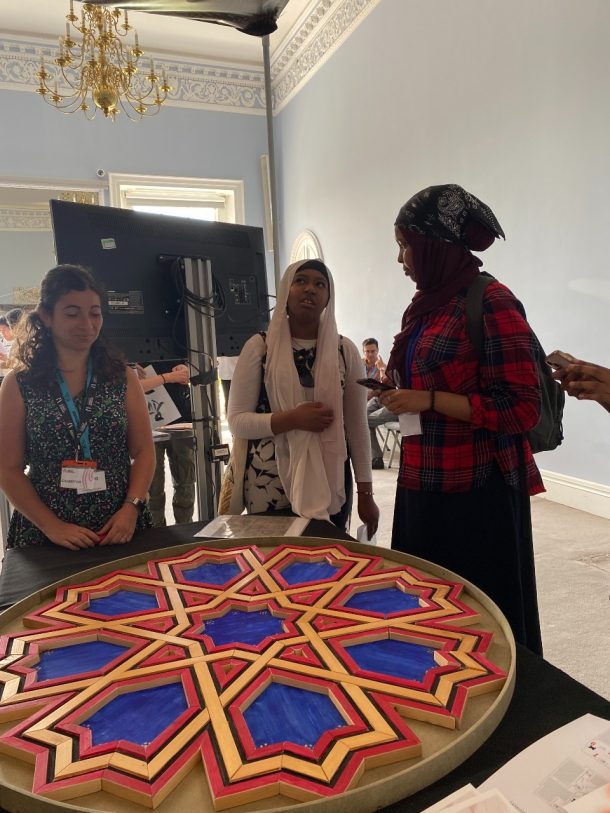
Having to explain the puzzle to people, and how it related to the ceiling, also really helped us to better understand the ceiling construction ourselves!
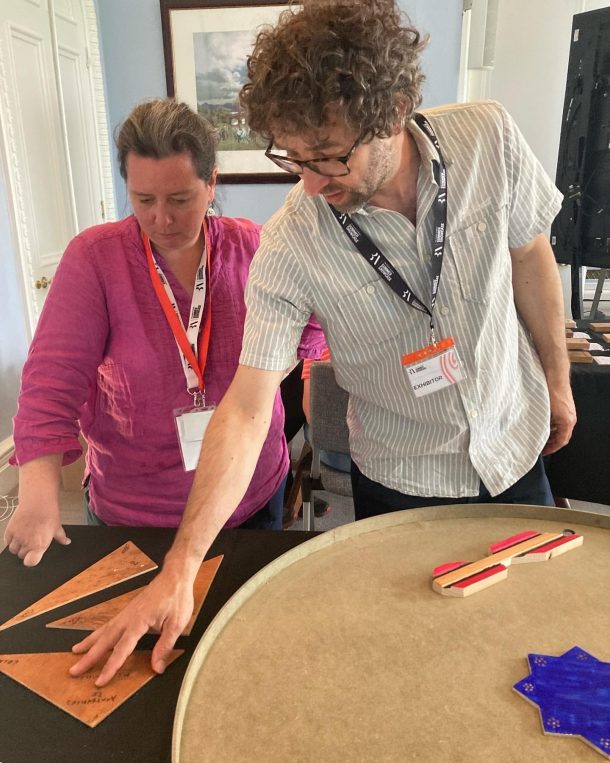
Our exhibit was also accompanied by a screen, with three films playing on a loop. As well as Naseer Yasna carving the panel mentioned above, we showed two films that we made especially for the showcase. The first was a short ‘teaser trailer’ called ‘Glimpses from Conservation’, with close-up details of all the ceiling’s elements filmed in the conservation workshop. The other film that we made is called ‘Voices from Torrijos’ and features interviews with four colleagues we met during our visit to Torrijos last November, talking about the absence of the Torrijos palace from their lives and what it means to them to have the ceilings and its other furnishings dispersed around the world. We will share these films via another blog post soon.
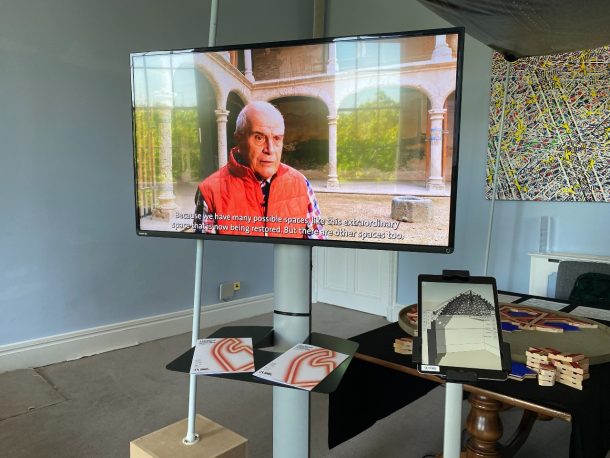
Lastly, we had two iPads, loaded up with photos from our research trip to Madrid and Torrijos, and any other image that we thought might help to answer any conceivable question that came up about the ceiling; and with a Sketchup reconstruction of the ceiling’s original appearance, in situ in its room in the palace, produced for us by the amazing Javier de Mingo. This really helped to explain the ceiling’s three-dimensionality to our visitors, especially since the canvas printed canopy inevitably gave an impression of the ceiling as a flat object.
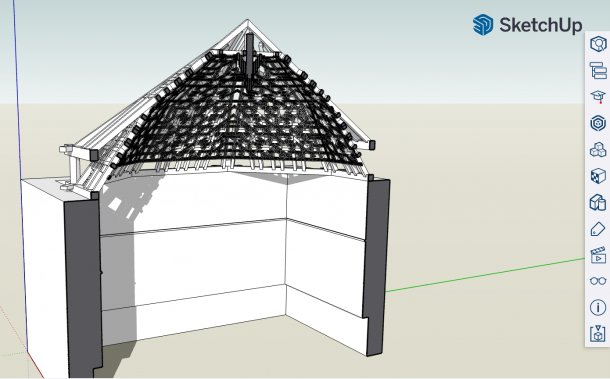
We talked non-stop for three days and came away with sore throats and sore feet. Around 1000 people came through the British Academy over the course of the Showcase, and alongside the twelve exhibits was a whole programme of talks and other events. It was immensely stimulating and huge congratulations to the two key organisers, Rosie Beaumont-Thomas and Magda Stroe, and all the members of their team. Thank you for having us!
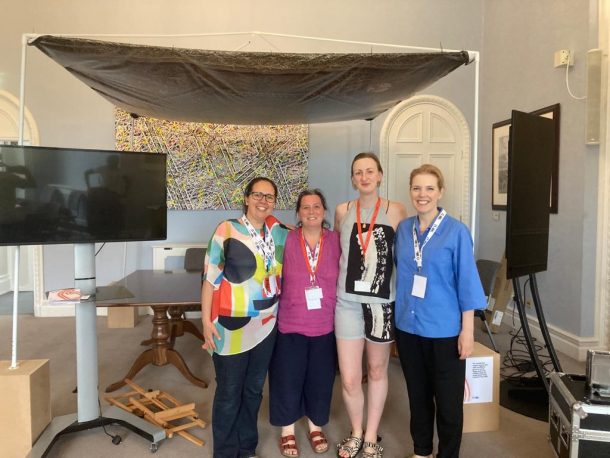
If you visited us at the Summer Showcase, we would love to hear what you thought of the exhibit! And if you didn’t, we would love to hear from you – what would you like to know about the ceiling? You can leave us a comment below, or follow us on Instagram @craftingmedievalspain and send us a message there.



Congratulations Mariam on such a splendid and thorough showcase on this magnificent piece of Spanish art. Unfortunately I was not able to attend it. I have undertaken a basic course on La carpinteria de lo blanco with Angel Martin in Soain and was told about the V&A ceiling. I happen to be in London and was planning to visit the museum tomorrow. I understand the ceiling is still undergoing conservation work to prepare it for public display isn’t it? Just want it to confirm this and check whether any of the findings, literature, insights on the showcase and the research project in general is accesible to the public now… Thanks in advance